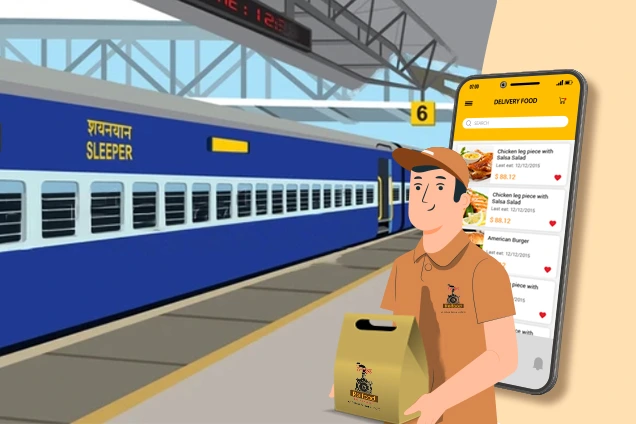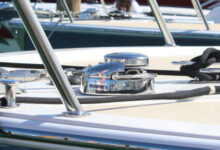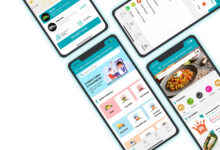
The Evolution of Railway Food Ordering: From the Dining Car to Digital Platforms
These days, railway food order scenarios have moved light years away from the clunky old dining cars and onto sleek modern computer platforms. This development is a hallmark of how technology and consumer tastes have evolved. Let’s time travel and see how the railway meal orders have evolved – from clanging silverware in dining cars to tapping and swiping the smartphone applications.
Table of Contents
The Dining Cars
The dining cars were the acme of elegance and refinement in the early days of the train traveling. Amidst the richness of comfortable cushions, diners would enjoy food which had been thoughtfully crafted and plated on the finest china. The service was top-notch, and the ambiance had a feeling of elegance. In the dining cars, people gathered to eat but there were also meeting places where one could make new friends and exchange stories.
In the meantime, though, the dining cars lost some of their novelty. As train services grew, it became more challenging and expensive to maintain the food eateries. Besides that, people were after quicker and more convenient meals since travelling patterns had changed and their lifestyles became more hectic.
The Pantry Cars
Indian Railways installed pantry carriages, which brought the gastronomic experience to fulfil the increasing expectations of passengers. No need for fancy dining arrangements thanks to pantry cars; travellers can have freshly made meals on the go. The pantry car served various hot and cold foods and drinks to satisfy various interests. Pantry cars were a viable alternative for travellers who wanted high-quality meals while travelling, but they were more casual than dining cars.
Nevertheless, pantry cars were not without their problems despite the ease they provided. There was usually less variety and bad quality food due to space and budget constraints. Travellers were also worried about cleanliness and sanitation, which led to requests for other railway food order options.
Onboard Food Service
In place of the more old-fashioned dining and pantry cars, onboard food services became more popular as technology and customer expectations progressed. To provide passengers with their meals, these services use the state-of-the-art kitchens found at some stations. Indian Railways sought to improve the eating experience by assuring quality and diversity by outsourcing catering operations to competent suppliers.
The introduction of onboard catering services revolutionised how travellers purchase meals on trains, giving them more options and making their lives easier. Customers could now choose their meals from a wide variety of options and have them delivered whenever it was most convenient for them. With the advent of e-catering services, travellers can order online or via special hotlines, significantly simplifying the procedure.
An Upsurge in Online Resources
Like every other part of our life, the digital revolution has transformed the way we order meals from railways. Thanks to the widespread availability of smartphones and high-speed internet, there is a plethora of digital platforms that travellers may use to buy meals for their train rides and do enquiry railway train. Passengers now have the option of using third-party websites or applications that the IRCTC allows, like Railofy, for a smooth and hassle-free eating experience.
These digital platforms use state-of-the-art technology and provide travellers with a straightforward interface for perusing menus, submitting orders, and paying for their purchases. Real-time tracking and order personalization enhance the eating experience, giving passengers more control over the enquiry railway train.
The ease of use of digital platforms goes well beyond the ability to place railway food order. The whole value proposition is further enhanced when passengers take advantage of special offers, discounts, and loyalty programs. In addition, feedback systems are included to allow for continual development and to consider passenger preferences.
How Technology is Changing the Way Trains Serve Food?
Technology plays a big part in every field, and the food business is no exception. For travellers riding trains, food must get delivered. There are four main technical parts that technology has made possible for this whole system to work well:
- Mobile Apps
- Websites
- Online payment system
- Real-time GPS tracking system
The online method has made it very easy for people to do everything, from buying food to having it brought to their spot. Travellers can now do railway food order using either the mobile app or the website, and they can choose the method of payment that works best for them. Passengers can also check on the progress of their orders and talk to the delivery person at any time to get real-time information. For sure, it makes things clear and dependable.
Online apps like Railofy, which let you buy food for trains, have changed the way food is served on trains and made train rides more comfy. They free travellers from having to take their own food, giving them one less thing to think about while travelling.
Conclusion
The way food is ordered on trains is a great example of how travellers can always find a way to adapt and innovate. There has been constant development and improvement along the way, from the luxurious dining cars of yesteryear to the modern digital platforms for enquiry railway train. With the rapid advancement of technology and shifting customer expectations, the future of railway food order is quite bright.
IRCTC-approved third-party websites or applications may revolutionise train meals by embracing digitisation, leveraging collaborations, and putting passenger needs first. Relish a delectable lunch from the convenience of your seat or go out to discover new culinary delights—either way, the trip is sure to be just as comfortable as the destination.








